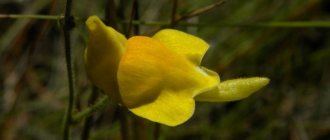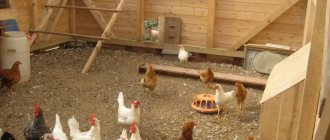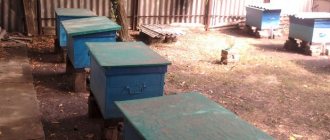Touch-me-not, evergreen, light, Vanka wet flower - all these are names for one plant, which is quite often found in our apartments.
The homeland of this pretty flower is tropical Asia and Africa. It is one of the most unpretentious and easy plants to grow at home. Ogonek takes root easily, grows quickly and looks very impressive during flowering: its compact bushes, strewn with bright flowers, can decorate any room. The Vanka wet flower also has another name - balsam. With good care, it can bloom almost all year round, and providing it with favorable conditions is not difficult.
Even a novice gardener can easily cope with growing this plant. It is perennial, but due to its rapid growth, the shoots usually become elongated, the bush becomes spreading and quite soon loses its compact shape. Therefore, balsam lovers often take cuttings from old plants in the spring, growing new bushes.
Impatiens bloom better if planted in a slightly cramped pot or container. A plant in a pot that is too spacious will not bloom lushly.
Description of the plant and its varieties
The genus impatiens includes about four hundred species of plants. In indoor floriculture, they mainly grow:
- Holst's balsam;
- Sultan's balsam;
- Waller's balsam;
- New Guinea hybrids.
Wet Rolyflower flowers come in a huge variety of shades: from white and soft pink to red and dark burgundy. Plants with two-color petals are becoming increasingly common. Recently, breeders have developed varieties with flowers much larger in size than the usual indoor balsams. At the same time, the bushes of such plants are still compact.
Given the popularity of balsam for growing indoors, breeders continue to work on creating new varieties. The hybrids that have appeared recently are striking not only in the size of the flowers, but also in their color and shape. Varieties with double flowers have already become quite common, which look great in landscaping rooms and balconies.
Impatiens bushes, densely strewn with bright flowers, are very decorative. However, this was not enough for breeders, and varieties with beautiful variegated leaves appeared. Such plants look very attractive even at a time when the flower buds have not yet bloomed. This can be seen in the photo of wet Rolyflower with variegated leaves.
Variegated varieties need to be created in the same conditions as ordinary ones. They require the same care, with only one difference: in winter, their temperature should be higher than for plants with solid green leaves.
Characteristics of the variety and species diversity
The Balsam family includes more than 400 varieties, which differ from each other not only in color and size, but also in habitat. Impatiens are successfully grown as both indoor and garden flowers. Under natural conditions, the plant is found in Africa, Asia and on the islands of Zanzibar.
The erect bush is abundantly covered with succulent leaves, which have an oval shape with pointed edges. The color of the foliage varies from light green to bronze. The average height of indoor specimens varies between 30-40 cm.
There are also dwarf varieties, the height of which does not exceed 20 cm. In garden floriculture you can often find balsam about 2 m in height. Flower colors can be varied: red, snow-white, lilac, etc. Some varieties come in two or three colors.
Among the variety of balsam, the most popular are the following types:
- The Niamnia fire is often called African, because Africa is considered the birthplace of the flower. It lives indoors, but in summer it grows well in a flowerpot outside. Unusual flowers are very similar to small jugs. The color of the flowers is pink, red or yellow-red. This species includes both low-growing and tall varieties.
- Impreza is a hybrid plant, the height of which is 15-20 cm. The bushes are distinguished by good branching and strong stems. The flowers have a simple shape. The buds are colored purple, crimson or red. There are also two-color varieties with white flowers and a pink center. Hanging varieties of this species look great outdoors in hanging flowerpots.
- New Guinea balsam tolerates drought and can bloom almost all year round. The leaves are bronze, variegated or green. The flowers are quite large - up to 6 cm in diameter. Simple varieties are most often grown, but semi-double ones are also found.
- Holst's balsam is a plant with erect stems, the height of which is more than 60 cm. The leaves are mainly brown-green in color. The color range of the buds is very diverse, and the flowers can be either simple or double.
- Waller's balsam is a compact herbaceous shrub, the height of which does not exceed 25 cm. The light green leaves grow up to 10 cm in length. The petals of the plant can be colored red, blue, white, purple or pink.
Caring for balsam at home
In order for the plant to thank you with lush and bright flowering when summer comes, it is important to know how to properly care for this flower. Vanka wet is an unpretentious plant; its growth and flowering requires conditions that are not at all difficult to create at home:
- Temperature: the optimal temperature for balsam is about 18 degrees. In winter, you need to make sure that it does not fall below 13 degrees. In summer, the temperature should not rise above 22 degrees. Conditions that are too hot and dry can cause leaves to curl and fall off.
- Lighting: good, but diffuse. The plant needs to be shaded from bright sunlight. You should not place a pot or container with balsam on the windowsill of a south-facing window. The plant can tolerate some shade, but in this case it will not bloom.
- Watering: in summer it is necessary to water the plant at least 2-3 times a week. In winter, when the temperature drops, watering must be reduced. Usually in the cold season this flower is watered once every 7-10 days. Impatiens do not tolerate waterlogging, especially in combination with low temperatures. This can lead to plant disease and even death. Let the soil dry thoroughly before watering again.
- Soil: balsam requires a loose, nutritious soil mixture. The ideal would be a combination of greenhouse and deciduous soil with the addition of a small amount of sand.
- Feeding: in summer, during the period of active growth - once every 1-2 weeks. Fertilizing is done with fertilizers for indoor plants diluted in water. It is recommended to alternate organic and mineral fertilizers.
- Air humidity: if the summer temperature reaches 22 degrees, the pot of balsam should be placed in a tray with wet pebbles. However, the plant should not be sprayed. This can lead to fungal diseases and spots on the flowers.
- Transplants: after the first year of growth, balsam must be replanted annually in fresh soil mixture. Since the plant becomes very elongated due to its rapid growth, it is better to grow a new balsam from cuttings every spring.
- Leaf care: Brush dust off the plant with a soft brush. In summer, you can wash the leaves in the shower and then shake off any drops of water. Do not use polish for maintenance as this may cause damage to the leaves.
If you provide proper care at home, the wet vanka flower will thank you with its lush and long-lasting flowering.
To fertilize balsam, use fertilizers in a concentration two times lower than that recommended by the manufacturer.
Moisturizing and feeding
Caring for balsam at home is both simple and complex.
The flower loves moisture, so it needs to be watered and sprayed regularly. It is especially important to prevent the soil from drying out during the period of active growth and flowering, which lasts up to 8 months a year. The balsam flower will immediately report a lack of moisture: if the foliage has withered, it means urgent watering is required
But you shouldn’t overdo it when caring for indoor balsam. It is necessary to ensure such conditions that there is no waterlogging. To do this, you need to choose the right soil. Indoor balsam flower grows well in loose, nutritious soil. The composition may vary. A mixture of peat and humus, turf soil and sand is often used - all components are taken in equal parts. This type of soil easily fills with water. And to avoid moisture stagnation, you need to put expanded clay on the bottom of the pot.
If you decide to grow balsam, caring for it at home should be regular. Roly needs not only to be watered in a timely manner, but also to be fed quite often. During the period of abundant flowering, this should be done 3-4 times a month, using complex nutritional compositions to improve foliage growth and bud formation. Additionally, balsam needs to be fed with potassium-phosphorus fertilizer 2 times a year, and in the spring with nitrogen fertilizer.
In the summer, the wet plant is often fertilized and watered even more often - daily or every other day.
Balsam propagation
The Vanka wet flower propagates in spring and summer. Two methods are suitable for its propagation: seeds and cuttings. You can purchase ready-made seeds or get them yourself from your home plant, but to do this you need to take care of its pollination. The seeds germinate within two weeks.
Rooting of cuttings requires approximately the same time. As you can see in the photo, a wet vanka indoor flower can easily take root in water. 3-4 pieces of charcoal should be placed in the water for rooting cuttings. Side shoots of a plant about 8 cm long are suitable as cuttings.
After the cuttings take root, they should be transplanted into small pots. At first, the transplanted cuttings should be covered with plastic wrap to ensure a high level of humidity.
This plant does not like sudden temperature changes. However, in winter, it is advisable to reduce the temperature for balsam to 14-16 degrees, providing the plant with a period of rest.
How to propagate and replant a flower at home
Impatiens are propagated in summer and spring. There are two methods of propagation: cuttings and seeds.
Propagation by seeds
This method is used extremely rarely in indoor floriculture. This is due to the low germination of planting material. In addition, grown specimens quite often lose varietal characteristics. The seeds are sown in a moist substrate, but are not buried, but left on the surface.
The container is covered with film on top to create a mini-greenhouse. Periodically moisten the soil with a spray bottle and ventilate the seeds. After two weeks, the first shoots will appear.
Cuttings
Propagating a plant by cuttings is very simple, because the cuttings quickly take root and adapt easily. For propagation, side shoots are used, the length of which should be about 8 cm. Each cutting should have 2-3 internodes. If there are flowers on the cuttings, they are removed along with the lower leaves. Planting material is placed in water for two weeks.
Impatiens cuttings
Experienced flower growers advise placing several pieces of charcoal in a container of water. After the roots appear, the cuttings are planted in small containers.
Transplant procedure
The indoor fire is replanted every year with the onset of spring. Young sprouts can be replanted twice a year, because they quickly grow out of a small flowerpot. The time for transplantation is chosen as follows:
- Transplantation is carried out in the spring, when balsam begins to actively grow. The bush needs to be rejuvenated every 1-2 years.
- 14 days after purchase, the plant must be replanted.
- This procedure can be carried out at any time of the year (except for the flowering period), if the flower is too crowded and its roots protrude from the drainage holes.
Replanting a flower
The pot for the plant is selected a little larger than the root system, because a pot that is too spacious provokes an active growth of leaf mass. The filler for the container should consist of equal parts of peat, sand, turf soil and leaf humus. Experts advise adding small pieces of charcoal to the substrate to disinfect the soil.
The transplant is carried out as follows:
- remove the upper part of the substrate, carefully remove the bush from the container without shaking it off the old soil;
- the plant is placed in the center of a new flowerpot, the bottom of which is previously covered with a layer of substrate;
- the resulting voids are filled with fresh substrate and slightly compacted;
- the root collar should not be buried in the ground, otherwise there is a risk of flower rotting.
The transplanted light is watered with a small amount of water and taken to a shaded place for a while. It is advisable to exclude the first three weeks after the feeding procedure. During the flowering phase, balsam cannot be replanted, because this is a huge stress for the plant. The light can not only stop flowering, but also throw off all the buds. The flower can be replanted during this period only in case of serious diseases that require soil replacement.
Garden balsam
Unpretentious balsam - Vanka wet - is also used in decorative and home gardening. At the same time, plants of familiar indoor varieties are often used for landscaping and landscape design, planted in containers or open ground.
Along with the houseplant Vanka wet, an annual form called “garden balsam” is also used in landscape design. This plant spread from Eastern India, where it occurs wild. It has a lush, erect bush with succulent, fleshy shoots and green, jagged leaves.
The plant blooms long and profusely. The flowers of Vanka wet can be simple or double. They are distinguished by a wide palette of different shades. This heat-loving plant requires a well-lit place. Garden balsam is propagated by seeds.
Often, signs and superstitions are associated with the indoor flower Vanka wet. They say that it has a positive effect on creative people and helps create an atmosphere of harmony and harmony in the home. If peace and respect reign in the family, this flower will bloom magnificently and for a long time. Misunderstandings and disagreements between family members, on the contrary, can have a negative impact on the plant.
Vanka wet received its name because of this feature: droplets of juice often appear on its juicy green stems. Probably for the same reason, a superstition arose that because of the flower, family members may develop a penchant for alcohol.
How these facts are related to each other is unclear. And, of course, it’s up to everyone to believe in such signs or ignore them. But in favorable conditions and a sincere home atmosphere, balsam will bloom and become prettier day by day, delighting household members with the bright lights of its flowers.
General information
Gloriosa - what kind of flower, main types
Common balsam grows in the natural conditions of Africa, namely in the subtropical and tropical regions of the continent. The plant is adapted to rainy, hot summers and warm, dry winters. The indoor balsam flower must be provided with conditions as close as possible to natural ones, and it will delight with its beauty.
The appearance of the plant attracts many home gardeners.
There are many varieties of wet vanka.
If proper care is provided, the impatiens indoor plant bushes well, has dense foliage and delights with an abundance of bright flowers. At the same time, small sugar crystals are constantly formed on the leaves and stems of the plant, which are usually very attractive to children. Indoor balsam usually reaches 30-50 cm in height, although taller varieties are also found. Wet Roly is usually grown at home, but can also be planted in open ground as an annual.
Subtleties of watering
Vanka loves moisture very much, which means he needs frequent but moderate watering. So, in the summer it is recommended to water a little, but every day, or more abundantly, but every other day. In winter, the plant should be watered no more than 2-4 times a week if the room is hot.
In this case, care should be taken to ensure that water does not stagnate in the soil cavities. If stagnation occurs, you can either add soil, put the flower in a warm place so that the water evaporates, use cotton wool, or simply drain the excess water.
Selection of location and conditions of detention
Now let’s find out in what conditions impatiens need to be kept so that the plant forms a bush densely covered with bright flowers.
Lighting and location
Vanka wet loves a lot of light, but it must be diffused. Therefore, it is best to place the pot on an eastern or southern windowsill with light shade. You can place the plant at the back of the room if it is well lit. In summer, the flower can be placed on the balcony, but in cold and windy weather it must be brought home. In winter, you can illuminate the balsam with an artificial lamp, but this is not urgently necessary.
Temperature
The optimal temperature for growing Sultan's balsam is +18...+20 o C. The plant is not afraid of short-term heat (about +30 o C), but does not tolerate cold (below +15 o C).
Air and humidity
The flame requires well-humidified air (60-80%). Its leaves should be frequently sprayed with lukewarm water. Do not leave a pot with a flower in a draft.
Soil and pot
The soil for wet roly-poly should be loose and light. It is desirable that it has a slightly acidic reaction. It should not contain many nutrients, since excess organic matter leads to an increase in the green part of the plant and a decrease in the number of buds.
You can buy universal soil for indoor plants. But it is better to use a mixture of river sand, peat and leaf soil. These components must be taken in a ratio of 1:1:2.
A pot for wet roly-poly should be of medium size. Its diameter and width should be 15-20 cm. Indoor balsam grows quickly, so there is no point in planting a small bush in a small pot first: after a month it will have to be transferred to another container.
It is better to choose plastic as a material, as it retains water better. If the pot is ceramic or clay, then you will have to water the flower more often. It is important that the pot has drainage holes.
Caring for a wet roly-poly is quite simple. Therefore, this flower is suitable for beginners in the field of floriculture.
Watering
The wet plant needs to be watered with lukewarm, settled water every time the top layer of soil begins to dry out. The soil should not be allowed to dry out completely: otherwise the stems will quickly shed their leaves, they will become bare and ugly. At the same time, the number of buds formed will sharply decrease.
Rules of care
This is an easy-to-care plant. The main thing is not to forget about watering. The soil in the container where balsam grows should always be moist. Its name reminds us of this - wet. Caring for Ivan is very easy; he loves spraying. If balsam lacks moisture, its leaves wither, turn yellow and may fall off. If a flower is not watered for more than 3 days, its leaves dry out at the ends. If you do not restore the supply of moisture to the soil, the plant will die. In summer, balsam requires daily watering. In winter, hydration is reduced. What should the room temperature be:
- In winter, at least 14 degrees Celsius.
- If the housewife wants the plant to bloom, then the room temperature should be at least 17 degrees.
- Impatiens come from the tropics, so they love warmth.
The plant reaches for the light. But it should not be placed in direct sunlight. In summer, if the window faces south, it is better to protect the plant. To do this, you need to move it deep into the room, into the shade. In order for the balsam to continue to delight the gardener with beautiful flowers, it must spend at least several hours a day in direct sunlight. Ivan loves to be sprayed frequently. This procedure avoids getting water on the inflorescences. Transfer:
- The plant loves when its roots fill the container with soil.
- The soil for balsam should consist of turf, peat, humus and sand.
- These ingredients are taken in equal quantities depending on the volume of the pot.
- Drainage is placed at the bottom.
- Experts recommend replanting balsam once a year.
- It is better to do this in the spring, in March.
- There is no need to take a container that is too large for replanting, because Ivan does not like large pots.
- For balsam to feel good, it is enough to replace the soil.
Plant pruning
Over time, balsam grows and loses some of its attractiveness. You need to renew the flower every 3 years. Flower pruning is carried out in the following cases:
- If the shoots have reached the required length, their tops are pinched. This procedure promotes the formation of young side shoots, and the bush becomes more luxuriant.
- If the plant has grown too much, it is advisable to cut it to half the length of the shoot. Cut parts can be used for propagation.
- In the spring, lateral shoots that are damaged or diseased are pruned. If there are many such branches, removal is carried out in stages to reduce stress on the plant.
Flower Wet Vanka growing features
In total, botanists identify more than 600 species, including indoor balsam.
There are two large types of this plant: annual and perennial.
But, regardless of the type, there are several general rules for caring for Vanka:
- Vanka - wet flower - a name that did not arise by chance, but due to its moisture-loving nature. The flower needs regular watering, otherwise it stops blooming, and the leaves lose their freshness, brightness and healthy appearance. The lack of moisture is expressed in the fact that at first the bush becomes drooping, you can see how the stems literally lie down. You can also see how, after abundant watering, the plant comes to life right before your eyes, the leaves fill with juice, the ovaries of inflorescences form, and the stems acquire their former durability.
- Watering in winter can be reduced somewhat, but in the summer and spring months, especially during hot periods, it is better to overwater the bush rather than underwater it. It begins to wither quickly. In rooms where it is too hot, watering should be done every other day.
- Abundant flowering is ensured not only by fertilizing, but also by the small size of the pot. Experienced gardeners often plant indoor balsam in small plastic pots and seedlings, and then several of these pots are placed in a rectangular flower tray. To make such a composition decorative, tow or a stone-sand mixture is used. The latter provides drainage, moisture retention and aeration. For decorative purposes, the composition is formed from balsam with inflorescences of different colors.
- Flowering is also directly dependent on the quality of pruning and lighting.
- Impatiens are light-loving; in the shade the plant continues to grow, but with less intensity, and flowering is significantly reduced and is short-lived.
The general principle of caring for plants is their regular feeding. Vanka is not particularly picky about it, but the use of mixtures for indoor flowers, such as “Ideal,” improves the appearance of the color and also improves flowering. Let's take a closer look at the intricacies of caring for balsam.
Diseases and pests
Diseases rarely affect impatiens. A flower can only get sick if it is not cared for properly. This usually happens in winter, when it is cool on the windowsill and cold air blows through the cracks in the window. At this time, with excessive watering, the soil turns sour and the roots begin to rot. In this case, the flower must be urgently transplanted into a new pot with a new substrate.
Other problems you may encounter when growing moss at home, and how to solve them:
- Leaves fall . The flower is either too hot or too cold. This can also happen with infrequent watering. You will have to adjust the maintenance conditions and restore the watering schedule.
- There are very few buds . This happens if balsam is kept in poor lighting conditions. Another reason is the excess amount of minerals and organic matter in the soil. In this case, the plant forms a powerful bush, and it looks completely healthy.
- Leaves become pale . They sag, and there is a thin cobweb in the internodes. This happens when a plant is damaged by spider mites. Typically, this pest lives in conditions of low air humidity. To combat it, use insecticides (Aktaru, Inta-vir, Karbofos).
- Leaves and stems are deformed . And on their surface clusters of pests are visible. This is an aphid. It can be destroyed manually. Spraying the plant with soapy water also helps against it.
Vanka wet is a fast-growing and almost continuously flowering indoor plant. It requires good but simple care. That is why the flower is so common among beginners and amateurs. Plant it on your windowsill to admire the fiery flowers against the dark and shiny foliage.
Flower transplant
The flower is usually replanted in the spring. If you want the wet willow to bloom well, do not plant it in a pot that is too large. It is better to choose a pot slightly larger than the current one.
For planting, prepare the soil with an acidity of up to 6.5 pH. Sterilize the soil - this will protect the flower from possible diseases. To sterilize the soil, place the container with the soil in another container of larger diameter. Pour water into the gap between the containers to the middle, close everything with a lid and boil over low heat for an hour.
Source: Depositphotos
When there is a lack of heat and light, the plant most often begins to shed its leaves - watch for this sign
Creating favorable conditions
Aloe vera flower: care options and medicinal properties of the plant
Caring for balsam involves performing a number of other activities. First of all, you need to take care of the location of the pot with the plant. Vanka wet loves light very much, but does not tolerate direct sunlight. Therefore, to obtain dense, abundantly flowering bushes, you should choose south-eastern and south-western window sills. In the summer season, the vanka can be taken out to the balcony, veranda or garden. The main thing is that the temperature regime is maintained within the range of +15...+24°C. The critical point for balsam is +13°C. At lower temperatures the plant dies.
The question of how to care for balsam worries many indoor plant lovers.
When answering the question, one cannot help but pay attention to the feature for which it was nicknamed the touch-me-not flower. The fact is that wet Roly does not tolerate being in the vicinity of other plants - it begins to shed its leaves
Therefore, it is important to allocate a separate place for it. A description of the rules for growing balsam will be incomplete without mentioning the need for regular rejuvenation of the plant.
Its essence is simple. Once every 3 years, it is necessary to cut off several good cuttings from the wet vanya, root them and form a new young bush. If this procedure is not followed, the balsam flower will gradually stretch out and lose its attractive shape. There will be fewer and fewer leaves on the stems, and flowering will become less abundant.
A description of the rules for growing balsam will be incomplete without mentioning the need for regular rejuvenation of the plant. Its essence is simple. Once every 3 years, it is necessary to cut off several good cuttings from the wet vanya, root them and form a new young bush. If this procedure is not followed, the balsam flower will gradually stretch out and lose its attractive shape. There will be fewer and fewer leaves on the stems, and flowering will become less abundant.
To avoid these problems between rejuvenations, you need to regularly pinch the tops. Comprehensive care also involves removing dry leaves. This procedure is not only cosmetic. It helps prevent the appearance of pests and the development of diseases.
Most often, the indoor balsam flower becomes infected with fungal diseases caused by waterlogging and spider mites:
- If you notice traces of mold and rot on the stems or soil, you need to take immediate action. Usually, a wet vanka plant is saved by simple replanting. In this case, it is necessary to thoroughly clean the roots from the old soil and prepare a more hygroscopic soil, taking care in advance of good drainage. Just in case, you can cut a few good cuttings for rooting.
- If you suspect a spider mite, you need to treat the balsam with one of the modern drugs, for example, Agravetrin or Neoron. Is it possible to get rid of harmful insects using traditional methods? There is an opinion that ordinary laundry soap helps to get rid of spider mites. It is necessary to prepare a moderately strong soap solution and wash it with the entire above-ground part of the flower, after removing the affected leaves. After a week, the procedure must be repeated.
Vanka wet, which is quite simple to care for, is a capricious plant. On the one hand, it takes root easily, is easy to care for, and can be grown even by an inexperienced gardener. On the other hand, you have to make a lot of effort to ensure that the balsam actively blooms and pleases the eye with thick foliage. Water and feed the wet willow in a timely manner, and it will be covered with beautiful flowers for most of the year.











